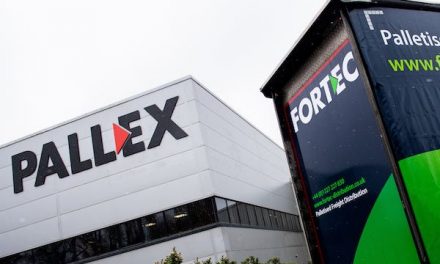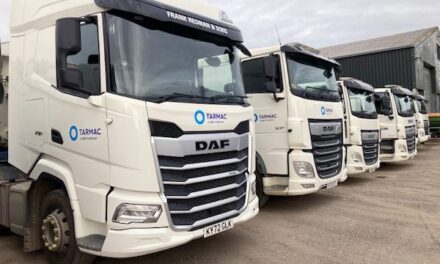The GSMA calls on business leaders and policymakers to
harness the potential of mobile connectivity and smart technology to achieve net zero by
2050 and limit global heating to within 1.5C above pre-industrial levels.
Smart technology could contribute 40% of the required carbon emissions savings for the
world’s net zero goals.
These connected technologies already exist. But today, new research from the GSMA,
backed by the Carbon Trust, shows mobile connectivity and smart technology are
significantly underused by energy-intensive industries, such as power and manufacturing.
In the energy sector, connected technology is only used in around 35% of solar grids and
10% of wind grids globally. Around 5% of the manufacturing sector uses connected
technology. And yet, these technologies could help fulfil almost 40% of the cuts required in
carbon emissions by 2030, if these industries are to reach net zero by 2050.
GSMA’s Director General, Mats Granryd, said, “The risk is that without smart technology
used widely, the world will miss 2050 net zero commitments. Business leaders and
policymakers must act now to harness the power of mobile technology and connectivity as a
key lever in the global race to net zero.
As low and zero-carbon technology evolves, people might think we will need to rely on future
technology solutions to meet net zero goals. At the GSMA, we disagree. We believe that
many of the smart tools and technology needed to drive down carbon emissions, especially
in the energy sector, already exist – they just aren’t being used to their full potential.”
The GSMA research focuses on four energy-intensive industries, including energy, transport,
buildings, and manufacturing. It shows how increased connectivity and mobile technology
can enable global savings of around 11 gigatonnes of carbon emissions by 2030. These
savings are the same as decommissioning 2,700 coal-fired power stations.
As political and business leaders from across the world convene in Glasgow next week for
COP26, the GSMA encourages leaders to consider our latest research that shows how
existing technology can dramatically reduce carbon emissions and increase energy
efficiency. The findings assume halving emissions by 2030, as called for by the ‘Exponential
Roadmap Initiative’1, in line with limiting global heating to 1.5°C.
Carbon Trust’s CEO, Tom Delay said, “This new analysis by GSMA on the enablement
effect of increasing connectivity across four energy-intensive industries, builds on previous
research by the Carbon Trust. It highlights the crucial role that smart and mobile technology
1 J. Falk, O. Gaffney, et al. Exponential Roadmap. 1.5.1 (2020). www.exponentialroadmap.org
can play in cutting carbon emissions and makes clear that much of the technology already
exists – it just needs to be rolled out at scale across industries.”
The key findings of the research include:
Energy Industry
• 46% of the cut required in carbon emissions in the energy sector could come from
the rollout of connected wind and solar energy grids – equivalent to 4 gigatonnes of
CO2 or decommissioning around 1000 coal-fired power plants by 2030.
• Today, connected technology is used in around 35% of solar grids and 10% of wind
grids globally.
• Without using connected grid technology, carbon emission savings would be
approximately 10% less – equating to an additional 1 gigatonnes of unnecessary
CO2 by 2030.
Transport Industry
• 65% of the required carbon emissions reductions across transport could come from
digital infrastructure to support electric vehicles, working from home, and, optimised
routing and fleet management of road haulage and commercial shipping.
• This would amount to a saving of 2.8 gigatonnes of CO2 over the next 9 years –
equating to 2.8 billion flights from New York to Paris
• Today, electric car charging station numbers are equivalent to only 0.8% of all cars
on the road.
Buildings Industry
• 43% of the required carbon reductions in the buildings sector could come from the
impact of installing smart meters in residential properties and smart buildings that use
connected heating, ventilation, and air-conditioning (HVAC) systems.
• Installing smart meters and connected buildings would amount to approximately 2.2
gigatonnes of CO2 over the next nine years – the same emissions as heating more
than 90 million homes over the same period.
• Today, only 60 million commercial premises have smart electricity and gas
connections, a small fraction of the total commercial buildings globally.
Manufacturing Industry
• 16% of the carbon reductions required in manufacturing could be provided by smart
manufacturing processes, equivalent to 1.4 gigatonnes of CO2; equivalent to the
emissions from manufacturing 140 million cars
• Today, connected technology is used in 1% of factories across the manufacturing
sector globally
• GSMA Intelligence analysed the impact of smart manufacturing processes including
IoT (Internet of Things) sensors for more efficient factory production monitoring,
diagnostics, warehouse management, and inventory tracking.
For more information about this research and methodology, click here; this microsite shares
further research from the Carbon Trust and GSMA Intelligence about mobile connectivity
and technology’s role in achieving net zero.
GSMA at COP26
At COP26, in the Green Zone, the GSMA is showcasing a 5G-powered, electric, Connected
Autonomous Vehicle (CAV). It highlights how 5G’s dramatic connectivity speeds will help
make the future of transport more sustainable. Real-time air pollution sensors will also
provide data from various locations across the UK.
On Wednesday 3 November, the GSMA will also host an event and panel discussion with
industry leaders: #MobileNetZero – How can mobile tech help us reach Net Zero faster,
easier and cheaper? To register and find out more information, please click here.
About GSMA
The GSMA is a global organisation unifying the mobile ecosystem to discover, develop and
deliver innovation foundational to positive business environments and societal change. Our
vision is to unlock the full power of connectivity so that people, industry, and society thrive.
Representing mobile operators and organisations across the mobile ecosystem and adjacent
industries, the GSMA delivers for its members across three broad pillars: Connectivity for
Good, Industry Services and Solutions, and Outreach. This activity includes advancing
policy, tackling today’s biggest societal challenges, underpinning the technology and
interoperability that make mobile work, and providing the world’s largest platform to convene
the mobile ecosystem at the MWC and M360 series of events.
We invite you to find out more at gsma.com







